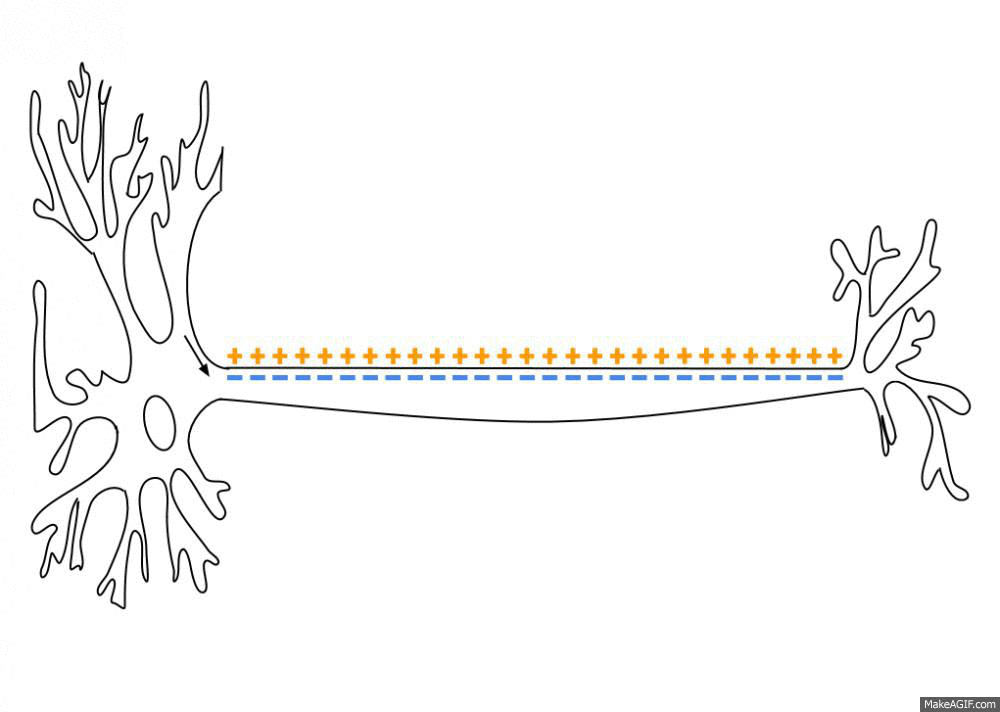|
Single Sensillum Recording
Single sensillum recording (SSR) is a form of extracellular electrophysiology. This technique measures action potentials, generated from olfactory sensory neurons (OSNs), through a single sensilla on an insects' antennae. These sensillum are hair-like structures that protrude through the cuticle as well as several other auxiliary and sensory cells. This method is often utilized if more quantitative results are desired, as the recordings produced have the ability to test and demonstrate the sensitivity and selectivity of individual OSNs, providing a technique for mapping the receptiveness of olfactory receptor proteins within the OSNs. It is also often combined with other techniques, such as gas chromatography, sensillum incision, diffusion, or microinjection. Some applications for this technique include testing pheromone sensitivity, testing reactions to volatile compounds in the environment, and reactivity to chemical cues from other organisms. Methods The test insect is mou ... [...More Info...] [...Related Items...] OR: [Wikipedia] [Google] [Baidu] |
Action Potential
An action potential (also known as a nerve impulse or "spike" when in a neuron) is a series of quick changes in voltage across a cell membrane. An action potential occurs when the membrane potential of a specific Cell (biology), cell rapidly rises and falls. This depolarization then causes adjacent locations to similarly depolarize. Action potentials occur in several types of Membrane potential#Cell excitability, excitable cells, which include animal cells like neurons and myocyte, muscle cells, as well as some plant cells. Certain endocrine cells such as pancreatic beta cells, and certain cells of the anterior pituitary gland are also excitable cells. In neurons, action potentials play a central role in cell–cell interaction, cell–cell communication by providing for—or with regard to saltatory conduction, assisting—the propagation of signals along the neuron's axon toward axon terminal, synaptic boutons situated at the ends of an axon; these signals can then connect wit ... [...More Info...] [...Related Items...] OR: [Wikipedia] [Google] [Baidu] |
Olfactory Sensory Neuron
An olfactory receptor neuron (ORN), also called an olfactory sensory neuron (OSN), is a sensory neuron within the olfactory system. Structure Humans have between 10 and 20 million olfactory receptor neurons (ORNs). In vertebrates, ORNs are bipolar neurons with dendrites facing the external surface of the cribriform plate with axons that pass through the cribriform foramina with terminal end at olfactory bulbs. The ORNs are located in the olfactory epithelium in the nasal cavity. The cell bodies of the ORNs are distributed among the stratified layers of the olfactory epithelium. Many tiny hair-like non-motile cilia protrude from the olfactory receptor cell's dendrites. The dendrites extend to the olfactory epithelial surface and each ends in a dendritic knob from which around 20 to 35 cilia protrude. The cilia have a length of up to 100 micrometres and with the cilia from other dendrites form a meshwork in the olfactory mucus. The surface of the cilia is covered with olfact ... [...More Info...] [...Related Items...] OR: [Wikipedia] [Google] [Baidu] |
Sensilla
A sensillum (plural ''sensilla'') is an arthropod sensory organ protruding from the cuticle of exoskeleton, or sometimes lying within or beneath it. Sensilla appear as small hairs or pegs over an individual's body. Inside each sensillum there are two to four sensory neurons. These neurons, or receptors, gather information about environment the arthropod is in: * Chemoreceptors (i.e. trichoid, basionic, coeloconic, placodea) * Mechanoreceptors (e.g.: bristle sensilla, campaniform sensilla, hair plates, chordotonal neurons) * Thermoreceptors * Hygroreceptors Most sensilla are specially shaped according to the type of information they are gathering. In spiders, slit sensilla are used to detect substrate vibrations, while trichobothria are used to detect air-borne vibrations. Chemoreceptors Chemo-reception is one of the most dominant senses in the insect kingdom. Many arthropods use chemical signals to locate food, shelter and mates. Other invertebrates have similar sensor ... [...More Info...] [...Related Items...] OR: [Wikipedia] [Google] [Baidu] |
Cuticle
A cuticle (), or cuticula, is any of a variety of tough but flexible, non-mineral outer coverings of an organism, or parts of an organism, that provide protection. Various types of "cuticle" are non- homologous, differing in their origin, structure, function, and chemical composition. Human anatomy In human anatomy, "cuticle" can refer to several structures, but it is used in general parlance, and even by medical professionals, to refer to the thickened layer of skin surrounding fingernails and toenails (the eponychium), and to refer to the superficial layer of overlapping cells covering the hair shaft ( cuticula pili), consisting of dead cells, that locks the hair into its follicle. It can also be used as a synonym for the epidermis, the outer layer of skin. Cuticle of invertebrates In zoology, the invertebrate cuticle or cuticula is a multi-layered structure outside the epidermis of many invertebrates, notably arthropods and roundworms, in which it forms an exoskeleton ... [...More Info...] [...Related Items...] OR: [Wikipedia] [Google] [Baidu] |
Gas Chromatography
Gas chromatography (GC) is a common type of chromatography used in analytical chemistry for Separation process, separating and analyzing compounds that can be vaporized without Chemical decomposition, decomposition. Typical uses of GC include testing the purity of a particular substance, or separating the different components of a mixture. In preparative chromatography, GC can be used to prepare pure compounds from a mixture. Gas chromatography is also sometimes known as vapor-phase chromatography (VPC), or gas–liquid partition chromatography (GLPC). These alternative names, as well as their respective abbreviations, are frequently used in scientific literature. Gas chromatography is the process of separating compounds in a mixture by injecting a gaseous or liquid sample into a mobile phase, typically called the carrier gas, and passing the gas through a stationary phase. The mobile phase is usually an inert gas or an Reactivity (chemistry), unreactive gas such as helium, arg ... [...More Info...] [...Related Items...] OR: [Wikipedia] [Google] [Baidu] |
Microinjection
Microinjection is the use of a glass micropipette to inject a liquid substance at a microscopic or borderline macroscopic level. The target is often a living cell but may also include intercellular space. Microinjection is a simple mechanical process usually involving an inverted microscope with a Optical power, magnification power of around 200x (though sometimes it is performed using a dissecting stereo microscope at 40–50x or a traditional Optical microscope#Compound microscope, compound upright microscope at similar power to an inverted model). For processes such as cellular or pronucleus, pronuclear injection the target cell is positioned under the microscope and two micromanipulation, micromanipulators—one holding the pipette and one holding a microcapillary needle usually between 0.5 and 5 μm in diameter (larger if injecting stem cells into an embryo)—are used to penetrate the cell membrane and/or the nuclear envelope. In this way the process can be used to int ... [...More Info...] [...Related Items...] OR: [Wikipedia] [Google] [Baidu] |
Pheromone
A pheromone () is a secreted or excreted chemical factor that triggers a social response in members of the same species. Pheromones are chemicals capable of acting like hormones outside the body of the secreting individual, to affect the behavior of the receiving individuals. There are ''alarm signal, alarm pheromones'', ''food trail pheromones'', ''sex pheromones'', and many others that affect behavior or physiology. Pheromones are used by many organisms, from basic unicellular prokaryotes to complex multicellular eukaryotes. Their use among insects has been particularly well documented. In addition, some vertebrates, plants and ciliates communicate by using pheromones. The ecological functions and evolution of pheromones are a major topic of research in the field of chemical ecology. Background The portmanteau word "pheromone" was coined by Peter Karlson and Martin Lüscher in 1959, based on the Greek language, Greek () and (). Pheromones are also sometimes classified as ec ... [...More Info...] [...Related Items...] OR: [Wikipedia] [Google] [Baidu] |
Ground (electricity)
In electrical engineering, ground or earth may be a reference point in an electrical circuit from which voltages are measured, a common return path for electric current, or a direct physical connection to the Earth. Electrical circuits may be connected to ground for several reasons. Exposed conductive parts of electrical equipment are connected to ground to protect users from electrical shock hazards. If internal insulation fails, dangerous voltages may appear on the exposed conductive parts. Connecting exposed conductive parts to a "ground" wire which provides a low-impedance path for current to flow back to the incoming neutral (which is also connected to ground, close to the point of entry) will allow circuit breakers (or RCDs) to interrupt power supply in the event of a fault. In electric power distribution systems, a protective earth (PE) conductor is an essential part of the safety provided by the earthing system. Connection to ground also limits the build-up of static ... [...More Info...] [...Related Items...] OR: [Wikipedia] [Google] [Baidu] |
Electrode
An electrode is an electrical conductor used to make contact with a nonmetallic part of a circuit (e.g. a semiconductor, an electrolyte, a vacuum or a gas). In electrochemical cells, electrodes are essential parts that can consist of a variety of materials (chemicals) depending on the type of cell. An electrode may be called either a cathode or anode according to the direction of the electric current, unrelated to the potential difference between electrodes. Michael Faraday coined the term "" in 1833; the word recalls the Greek ἤλεκτρον (, "amber") and ὁδός (, "path, way"). The electrophore, invented by Johan Wilcke in 1762, was an early version of an electrode used to study static electricity. Anode and cathode in electrochemical cells Electrodes are an essential part of any battery. The first electrochemical battery was devised by Alessandro Volta and was aptly named the Voltaic cell. This battery consisted of a stack of copper and zinc electrodes ... [...More Info...] [...Related Items...] OR: [Wikipedia] [Google] [Baidu] |
Electroantennography
Electroantennography or EAG is a technique for measuring the average output of an insect antenna (biology), antenna to its brain for a given odor. It is commonly used in electrophysiology while studying the function of the olfactory pathway in insects. The technique was invented in 1957 by German biologist Dietrich Schneider and shares similarities with electro-olfactography. Method Electroantennography is usually performed either by removing an antenna from the insect and inserting two chloride silver wires for contact onto the two ends and amplifying the voltage between them while applying an odor puff to see a deflection as in the figure, or by leaving the animal intact and inserting a ground wire (silver/silver chloride) or a glass electrode filled with a buffer solution to some part of the body, usually inserted into an eye, and another to the tip of the antenna. A large bore glass electrode can also be placed directly over the tip of the antenna, such as in ''Drosophila melano ... [...More Info...] [...Related Items...] OR: [Wikipedia] [Google] [Baidu] |
Insect Olfaction
Insect olfaction refers to the function of chemical receptors that enable insects to detect and identify Volatile organic compound, volatile compounds for foraging, predator avoidance, finding mating partners (via pheromones) and locating oviposition habitats. Thus, it is the most important sensation for insects. Most important insect behaviors must be timed perfectly which is dependent on what they smell and when they smell it. For example, olfaction is essential for locating host plants and hunting prey in many species of insects, such as the moth ''Deilephila elpenor'' and the wasps, wasp ''Polybia sericea'', respectively. The two organs insects primarily use for detecting odors are the Antenna (biology), antennae and specialized mouth parts called the maxillary palps. However, a recent study has demonstrated the olfactory role of ovipositor in fig wasps. Inside of these olfactory organs there are neurons called olfactory receptor neurons which, as the name implies, house recept ... [...More Info...] [...Related Items...] OR: [Wikipedia] [Google] [Baidu] |






